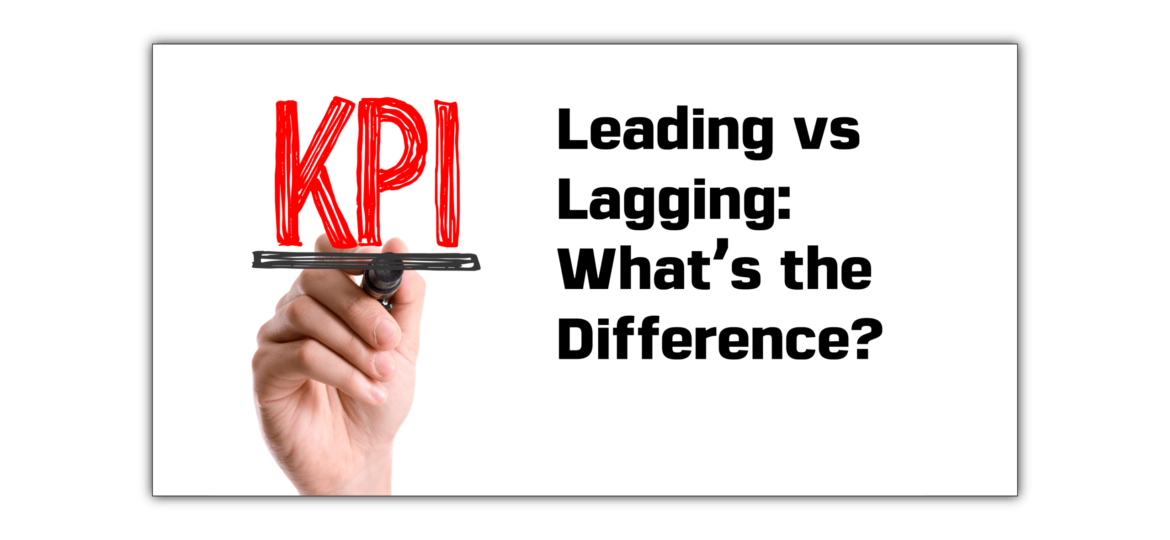Leading vs Lagging Indicators in Manufacturing
In any manufacturing operation, it’s important to track your progress and identify areas for improvement. To do this, operations leaders rely on Key Performance Indicators or KPIs.
A key performance indicator is simply a type of performance measurement that’s used to evaluate the success of an organization or of a particular activity within that organization.
Most often though, those KPIs that are being used are lagging indicators. Lagging indicators are KPIs that reflect past performance, such as on-time delivery rates or customer satisfaction levels.
Leading indicators, however, are measurements that can predict future performance, such as the number of complaints received or the percentage of defective products.
If we think about leading vs lagging indicators like being in the driver’s seat of your car, you will probably rather drive through a busy intersection looking out the windshield than out the rear window. That said, I bet you’d have a hard time backing out of the driveway without your rear window!
When you identify and use both leading and lagging indicators, you will get a complete picture of your manufacturing operation and become more proactive to improve it.
Lagging indicators in manufacturing
While there are an endless number of lagging indicators that you can use within your manufacturing operation, 3 of most common are revenue, profit, and cost.
Revenue is a measure of how much money a company brings in from sales, while profits give an indication of how efficiently a company is operating. Costs, on the other hand, show how much it costs to produce goods or services. Tracking these three lagging indicators, you can get a better sense of how your operation is performing and what the future might hold for its sustainability.
Typically, you would be comparing the most recent results to historical results. Think: Month over Month, Quarter over Quarter, and Year over Year.
Leading indicators in manufacturing
Like lagging indicators, there are an endless number of leading KPIs that can be identified and utilized. What can add to the confusion of leading indicators is the fact that they can also be viewed on their own as lagging indicators… crazy, right?!
As mentioned previously, leading indicators help you to predict future outcomes of lagging indicators therefore they are related to each other. Additionally, you can view that same leading indicator from a lagging perspective to get a different picture of what’s happening.
Let’s take inbound calls as an example. Your number of inbound calls could be used as a leading indicator to predict revenue for the month. Additionally, you can view inbound calls year over year to draw conclusions about customer interactions.
The best way to identify leading indicators is to take your lagging indicator and evaluate the activities required to achieve that lagging indicator. Those activities are the ones that will help you predict the future outcome you see when monitoring your lagging KPIs.
That may sound a bit confusing, so let’s look at an example:
Let’s take revenue as the lagging indicator that we want to identify some leading indicators for.
What activities need to happen in your business before revenue can be captured?
Could be estimating a project.
Could be receiving orders via email.
Could be your sales team receiving orders via outbound outreach.
Now, we take these answers and use them to develop your leading indicators.
So, if we knew that 500 estimates per month leads to $1.5m per month in revenue, we could conclude that 2 weeks in a row of 60 estimates is most likely going to lead to a lower-than-expected sales month.
That’s because 500 estimates would be an average of 125 estimates per week. 2 weeks at 60 estimates is equivalent to 1 week of regular activity.
Armed with this information, we can deploy additional resources to do outbound outreach, or other activities that may drive revenue opportunities.
Examples of Leading vs Lagging Indicators in Manufacturing
Here is a matrix of several manufacturing KPIs, possible leading indicators, and accepted lagging indicators:

Manufacturing is a complex industry with many variables at play. When you use both leading and lagging indicators in tandem, you can gain a more complete understanding of what’s happening in your operation and make data-driven decisions that will help you improve profitability and sustainability.
TL;DR
- KPIs or key performance indicators are simply a type of performance measurement that’s used to evaluate the success of an organization or of a particular activity within that organization.
- Most often, KPIs that are being used are lagging indicators. Lagging indicators are KPIs that reflect past performance, such as on-time delivery rates or customer satisfaction levels.
- Leading indicators, however, are measurements that can predict future performance, such as the number of complaints received or the percentage of defective products.
- The best way I’ve found to identify leading indicators is to take your lagging indicator and evaluate the activities required to achieve that lagging indicator. Those activities are the ones that will help you predict the future outcome you see when monitoring lagging KPIs.
- When you identify and use both leading and lagging indicators, you will get a complete picture of your manufacturing operation and become more proactive to improve it.
That’s it for today.
See you all next week!
Dave
Whenever you're ready, there are 3 ways we can help you:
- Current State Sprint: Get a bird's-eye view of your current operations and an action plan that shows you how to succeed.
- Future State Sprint: Get your future state implementation plan that drives operational excellence and sustainable growth.
- Let’s Collaborate: Optimize your operations with an engagement tailored to achieve your specific business objectives.


